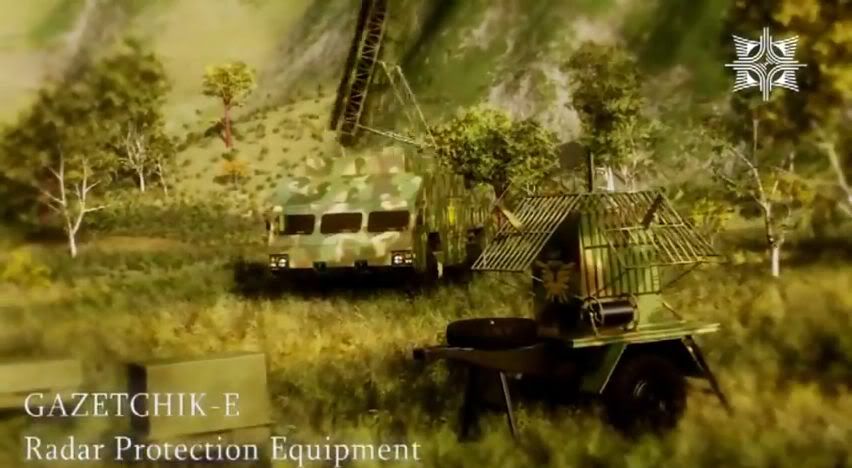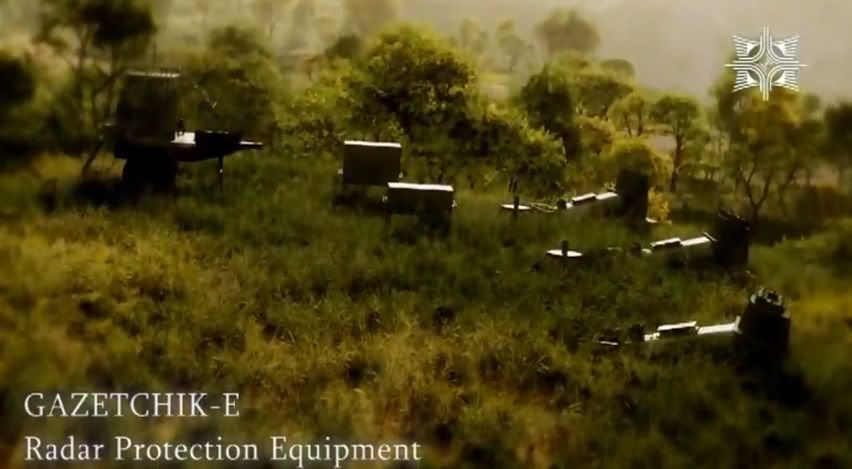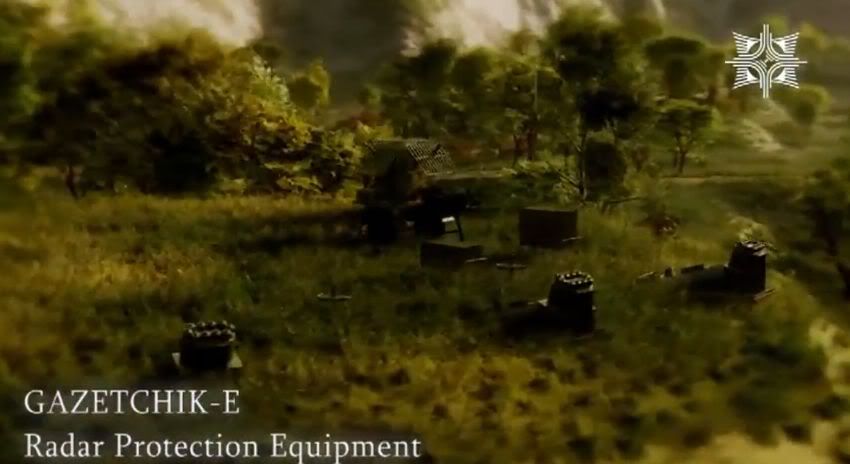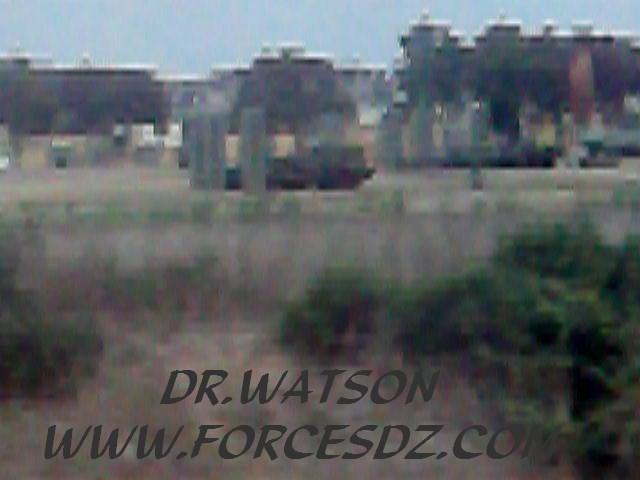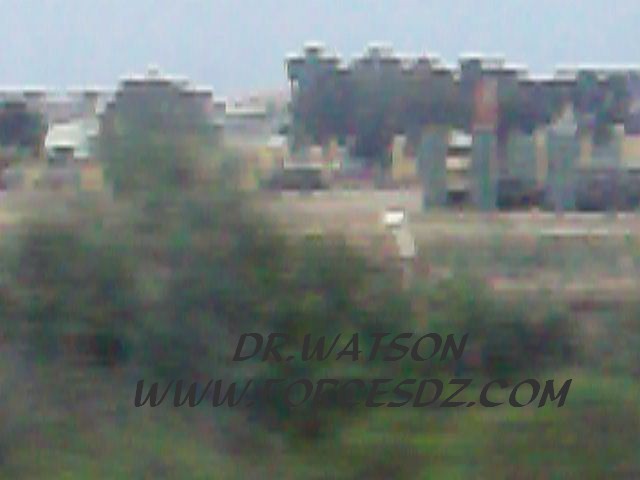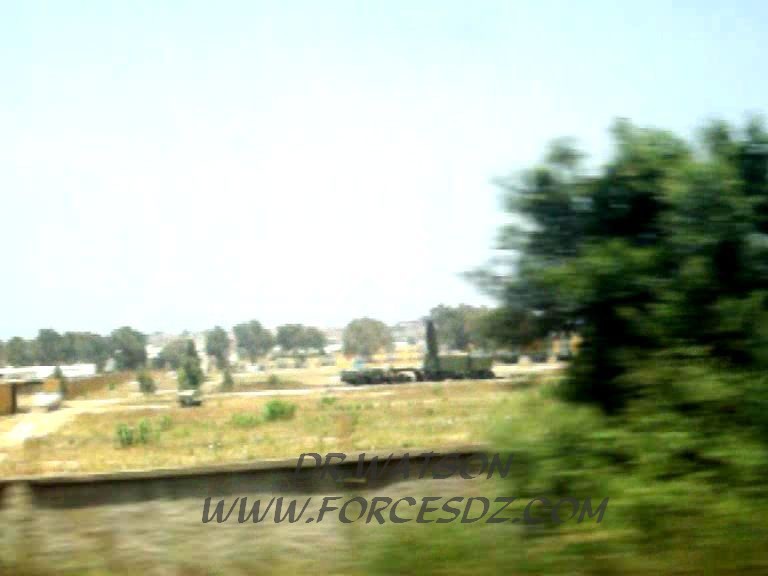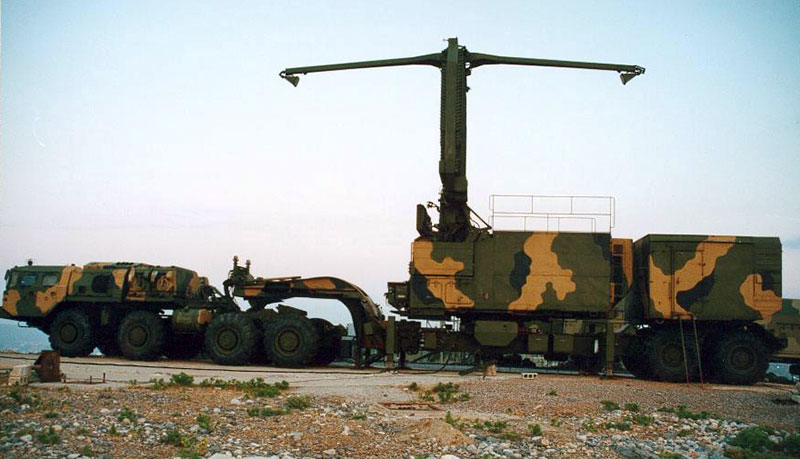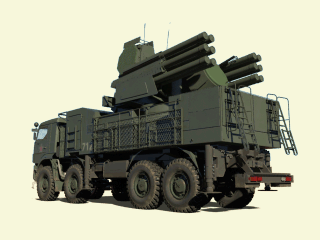Quoi qu'ils en soit plusieurs sources indiquent que finalement à l'aurée de 2012, 64 TEL ont été livrés entre 2008 et 2011.
http://i1127.photobucket.com/albums/l63 ... 133/56.jpg
http://www.armstrade.org/files/obrazec_glava5_2.pdf
http://i1127.photobucket.com/albums/l63 ... _47_21.jpg
Suite:Satellite Imagery Uncovers New S-300 Sites in Algeria
Following the delivery of the first four batteries of S-300 PMU2 surface to air missiles from Russia, Algeria has begun inducting the systems, partly replacing former S-125 (SA-3) systems. In the following satellite images taken recently by the Eros B spy satellite operated by the geospatial services company ImageSat International, two of the SA-3 sites are seen converted to serve the S-300.
In 2010 Algeria also has acquired the S-300 PMU2 from Russi as part of $7.5 billion arms package struck between the prime minister of Algeria and Russian president Vladimir Putin in 2006. Other elements of this arms package included Su-30 multirole fighters and modern submarines. The Air Defense command received the first unit in 2008; four units are currently delivered. The delivery of the remaining four is included under the original contract options.
http://defense-update.com/wp-content/up ... nt_web.jpg
http://defense-update.com/wp-content/up ... _web-1.jpg
http://defense-update.com/20120311_sate ... geria.html
Dès les années 70 les autorités soviétiques ont ressentit le besoin d’un nouveau système de défense anti-aérienne, longue portée, mobile intégrant divers systèmes de combat (PC informatisé, radar d’alerte avancé, radar d’acquisition, radar poursuite et de guidage, plusieurs (4 à 6) véhicules porteurs de missiles). Le Favorit fût ainsi développé. Son ultime évolution débuta la phase de test en 1995 et devint opérationnel dès 1999 c’était le S300PMU2.
Le système Favorit est composé de plusieurs éléments qui le rendent redoutable. Ainsi un bataillon de S300PMU2 est constitué :
- Véhicule 54K6E2 informatisé "gros calculateurs", regroupant l’ensemble des informations émanant des divers systèmes détection formant le Favorit (les Radars 76N6 & 64N6E2). Il s’agit là d’un vrai centre radar pouvant coordonner non seulement les actions des autres composantes du bataillon Favorit mais également des systèmes SAM associés tel que les 2S6M1, Pantsir S1 ou TOR-M1 et même des véhicules alliés (Avions, Hélicoptères, drônes...etc) grâce à une liaison data-link sécurisée ou par communication radio cryptée.
- D’un radar d’alerte avancée 76N6 : capable de détecter des aéronefs volant à basse altitude inférieure à 1000m jusqu'à 160km de distance. Permettant ainsi une mise en œuvre des actions nécessaire afin de contrevenir à toute entreprise hostile (cf. schéma général).KRATOS1133 a écrit :Almaz-Antey 2010 Annual Report :http://mdb.cast.ru/subscribe/info/As part of international cooperation programs GSKB has been negotiating possible contracts for the S-400 SAM system with Saudi Arabia and conducted technical consultations regarding the S-400 with China. GSKB also developed proposals for China regarding the upgrade of previously supplied S-300PMU1 (SA-20A) SAM systems and the 83M6E command and control systems to the Favorite (SA-20B) SAM system specifications. It also developed technical proposals for Algeria regarding the integration of the 54K6E2 control station (S-300PMU2 Favorit) with radar protection measures. As part of the KMSAM R&D project (development and delivery of a multifunction radar for the KM-SAM system) GSKB delivered two multifunction radar stations to South Korea.
- D’un radar d’acquisition 64N6E2 : (phased array radar) Son rôle après détection des hostiles et de traquer les cibles dans le périmètres d’action du bataillon. Il peut suivre simultanément plus de 200 échos radars sur un périmètre de 300 km. (Incluant avions « furtifs ou non SER > 0.001m² à celle d’une abeille », Hélicoptères, missiles de croisière, bombes guidées et à chute libre, émanation radar et/ou anomalie magnétique au-delà de l’horizon « AWACS »).
- Un système d’acquisition 30N6E2 « composés de plusieurs véhicules voir schéma ci-dessous » associé à chaque batterie de missiles (6 véhicules 5P85SE porteur de missiles 48N6E2 + ou porteurs de missiles 48N6E ). Son rôle est d’assurer l’acquisition, l’illumination des cibles attribué par le PC, ainsi que le guidage des missiles des batteries associées. Pouvant traquer jusqu’à 32 cibles et guider 72 missiles vers ces cibles de 2 à plus de 200km.
- 4 à 12 TEL porteur de missiles 48N6E2 (ou plusieurs véhicules porteurs de missiles 48N6E). Transportant chacun 4 missiles à haute vélocité de diverses tailles pouvant prendre en charge les cibles selon leurs tailles et leur éloignement par rapport à la batterie (cf. image ci-dessous des différents missiles)
During operation, Favorit's acquisition and illumination and guidance radar simultaneously scan the air space, detecting and identifying aerial targets. The simultaneous scanning of the air space by several radars completely denies targets any access to a protected zone, including ground-hugging cruise missiles flying at extremely low altitudes from any direction, even in conditions of intensive reflections from local objects and deployment of electronic countermeasures by the enemy
1- http://www.enemyforces.com/missiles/s300pmu2.htm (Un site US)
2- Un site consacré à l'armée de l'air Australienne (dont les dossiers sont d'une qualité remarquable)
http://www.ausairpower.net/APA-Grumble-Gargoyle.html
Je vous mets juste l'introduction pour voir ce qu'en pense nos amis australiens
http://i1127.photobucket.com/albums/l63 ... 133/00.jpg
Le système de détection affécté au PC. est le 96L6E dont les capacités sont beaucoup plus efficace et qui est capable de faire de l'acquisition de ciblesBackground
The Almaz S-300P/S-400 family of Surface to Air Missile systems is without doubt the most capable SAM system in widespread use in the Asia Pacific region. From its genesis during the 1970s this former Soviet PVO system has continuously evolved, through a series of incremental and larger enhancements.
At this time the PLA is the largest single user of this family of weapons, after the Russian Federation which inherited the considerable inventory operated by the Voyska PVO.
While the S-300P/S-400 series is often labelled as 'Russia's Patriot', the system in many key respects is more capable than the US Patriot series, and in later variants offers mobility performance and thus survivability much better than that of the Patriot. The introduction of the 64N6 Big Bird series of phased array acquisition radars in later variants provides them with many of the capabilities of the US SPY-1 Aegis system, in a highly mobile SAM system.
From an Australian perspective the deployment of large numbers of the S-300P/S-400 family of missiles in Asia is of major concern. Rapidly deployable, high survivable, and highly lethal, these weapons are especially difficult to counter and require significant capabilities to robustly defeat. The US Air Force currently envisages the F-22A Raptor as the primary weapon used to defeat these capable systems.
It is important to note that no F/A-18 variant, nor the Joint Strike Fighter, were designed to penetrate the coverage of the S-300P/S-400 systems. The survivability of these aircraft will not be significantly better than that of legacy combat aircraft.
With the penetration of the internet into Russia, significant volumes of imagery and technical material covering this system have become available in the public domain. This webpage concentrates some of this material with the aim of providing a resource for military intelligence and strategy professionals.
Ainsi chaque batteries peu maintenant être complétement autonome vis-à-vis du PC, et sont maintenant dépolyables sans forcèment être afféctées à un PC.
the new LEMZ 96L6 early warning and acquisition radar, a planar array design with electronic beam steering in elevation and mechanical steering in azimuth. It is intended as a replacement for the Tin Shield and Clam Shell. The 96L6/96L6E is available in semi-mobile towed versions, a semi-mobile mast mounted version using variants of the 40V6M/MD, and a fully mobile version on an 8x8 MZKT-7930 vehicle, based on the MAZ-543M chassis. LEMZ claim a detection range of 160 nautical miles, and the ability to track up to 100 targets, an IFF array is colocated with the antenna. (presque autant que le radar 40N6E2)
The system has an interface for digital data transmission directly to a 30N6E/E1/E2 Flap Lid, using cabled links to the S-300PMU/PMU-1 and optical fibre cables or microwave links to the S-300PMU-2.
Deployment and stow time is 5 minutes for the mobile variant, and 30 to 120 minutes for the semi-mobile and mast mounted variants respectively.



